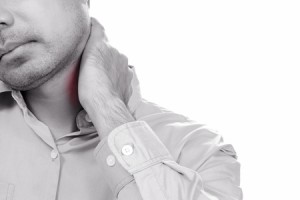Whiplash – The Cause of Pain
To download a copy of this newsletter, please click here.
Houston Chiropractor Comments: Many patients ask the question: “…why do I hurt so much now, and hardly hurt at all right after the accident?” Another common question is: “…why neck pain after a minor car collision can last so long?”
 A study that investigated chronic pain and dysfunction in whiplash cases reported a soft tissue origin for injuries associated with low-speed collisions. This means the pain comes from the muscles, ligaments, joint capsules, the disk, but not from a pinched nerve that would send pain down the arm and/or create hand numbness or grip weakness. The study also reported the point at which the neck buckles would only take one fifth to one-fourth of the weight of the person’s head (approximately 2.5 to 3 pounds) if one were to remove all of the supporting muscles, ligaments, and joint capsules. With the muscles and soft tissues intact, there is a very complex buckling pattern that occurs in the neck during most rear-end collisions where the lower half of the neck bends opposite to that of the upper half creating an S-shaped curve (when looking at the neck from the side). When this occurs, the vertebrae in the lower half of the cervical spine extend backwards while the upper half flex forwards, stretching the ligaments beyond the maximum elastic point and tissue tearing occurs. When ligaments stretch or strain, microscopic tearing starts at only 3-5% of tissue strain and when the strain reaches 7-8%, the ligament begins to lose its load carrying capacity and more significant tearing occurs. Unfortunately, none of this can be seen on a standard x-ray and usually goes undiagnosed.
A study that investigated chronic pain and dysfunction in whiplash cases reported a soft tissue origin for injuries associated with low-speed collisions. This means the pain comes from the muscles, ligaments, joint capsules, the disk, but not from a pinched nerve that would send pain down the arm and/or create hand numbness or grip weakness. The study also reported the point at which the neck buckles would only take one fifth to one-fourth of the weight of the person’s head (approximately 2.5 to 3 pounds) if one were to remove all of the supporting muscles, ligaments, and joint capsules. With the muscles and soft tissues intact, there is a very complex buckling pattern that occurs in the neck during most rear-end collisions where the lower half of the neck bends opposite to that of the upper half creating an S-shaped curve (when looking at the neck from the side). When this occurs, the vertebrae in the lower half of the cervical spine extend backwards while the upper half flex forwards, stretching the ligaments beyond the maximum elastic point and tissue tearing occurs. When ligaments stretch or strain, microscopic tearing starts at only 3-5% of tissue strain and when the strain reaches 7-8%, the ligament begins to lose its load carrying capacity and more significant tearing occurs. Unfortunately, none of this can be seen on a standard x-ray and usually goes undiagnosed.
Many variables exist that make assessing the amount of tissue damage difficult to predict or understand. One of these variables is the strength and amount of elasticity of a ligament prior to tearing. Also, the age, gender, and phenotype – that is, skinny, normal, or over weight – makes a difference. Generally, due to a reduced muscle mass in a female compared to most males, women are at greater risk of injury. The position of the person in the car, whether a seatbelt was used or not, if the head was turned before impact, if the collision was anticipated prior to impact, the speed at which one person compared to another can voluntarily contract a muscle are all additional factors affecting the degree of injury and corresponding pain. Another factor is the size of the spinal canal (the place where the spinal cord runs from the brain to the low back) as some people are born with narrow canals, making them more susceptible to injury. Other neurological variables include the degree of the excitability of the nervous system as the more excitable, the lower the pain threshold and pain is perceived more quickly. The type of pain from the deep tissues (ligaments, joint capsules, etc) is different than pain arising from superficial tissues as the former lasts longer and doesn’t follow known neurological pathways into an arm. Also, over time, if pain becomes chronic (pain lasting >3 months), a significantly lower pain threshold is found in these cases vs. normal control subjects.
Hence, when discussing your case with our office, it is important that you share your history of the accident, the time it took after the impact for symptoms to be initially noted, whether it is gradually worsening over time, and any other symptom that is unique to your situation that may not have been discussed here.
Dr. Ward Beecher practices at Beecher Chiropractic Clinic at 1001 Pineloch, Ste 700 Houston, TX 77062. You can schedule an appointment with the best chiropractor in Houston or by calling (281) 286-1300. If you have any questions regarding this blog, please comment below!

